According to business leader and best-selling author Farshad Asl, “Knowledge is learning something new every day. Wisdom is letting go of some bad habits every day.” When it comes to ranking for keywords, you’ll need both knowledge and wisdom so that you pick up the SEO skills you need and drop the bad habits you’ve formed along the way.
The internet has no shortage of opinions, especially when it comes to SEO. So, it's no wonder people new to search engine optimization get led astray when unwittingly following wrong or outdated advice. For this reason, unlearning bad habits (and replacing them with good ones) can be the best way to make noticeable improvements in your keyword rankings. By consciously making incremental improvements to how you approach SEO, you'll rank for keywords that are important to your website and business and build the organic search success that drove you to learn SEO in the first place.
1. Prioritizing Search Algorithms Over User Experience
In SEO, you’re often focused on what Google wants, but if your aim is organic success, you need to be targeting your content at the users who’ll be consuming it. Google wants the websites it recommends putting users first, so much so that page experience is one of their most publicized ranking factors this year.
Unfortunately, many SEOs get so focused on optimizing their website for Googlebots they forget entirely about their users. This problem is endemic across the internet. When you look at many modern search engine results pages (SERPs), it’s evident many creators are making content for algorithms because each piece of content looks the same.

These two articles ranking for fintech trends share the exact same bland title that displays their likely primary keyword, “banking and fintech trends,” but it doesn’t help readers who want to know a little more about what they’ll find if they click through.
The same can be said for this SERP on “how to watch the all-star game.” All these posts are essentially carbon copies; why would you even choose one over the other?
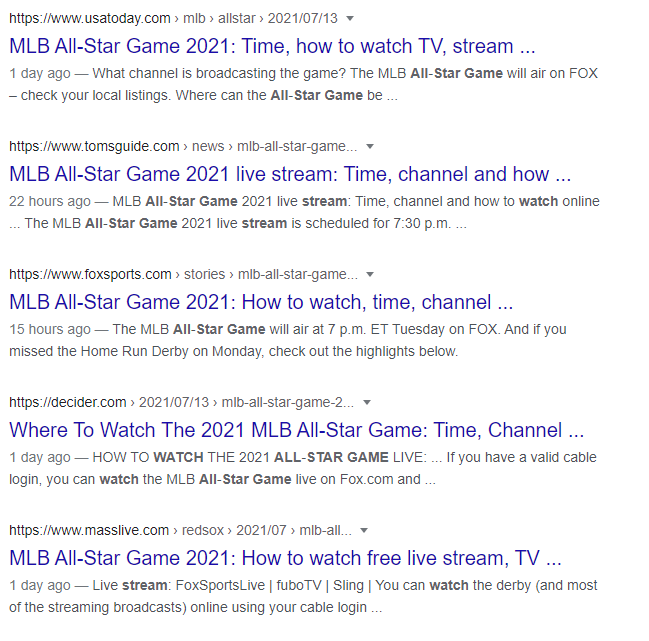
Another common issue found on web pages is keyword stuffing: the act of placing keywords where they don’t belong to try to influence search engine rankings. Not only is this practice against Google’s policies, but it also makes for crummy reading. In this example from a grammar website, the writer has repeated “most common grammar mistakes” in the title and first sentence to weak and redundant effect—just to shove a keyword in there.

It’s not just in the writing. Many websites try to stuff keywords into alt text, which is meant to be an accessibility feature designed to help the visually impaired understand content inside images.

The same grammar website also included their keyword “common grammar mistakes” in the alt text of their images, despite the image being completely unrelated.
When you worry about keyword density and not how a human will perceive your work, you end up with bad writing people will hate reading.
Luckily, there’s a better way.
What to do Instead
Write for humans—not robots. Ask yourself what people are actually looking for when they search a particular keyword. Then, find a way for your content to anticipate and fulfill these search intents better than what is currently on the SERP.
You can determine a keyword’s search intent by doing a little bit of research and thinking:
- Check the SERP: Figure out what Google believes the search intent is; they’re usually pretty accurate.
- Read the Top Results: In a competitive SERP, they’re probably the top results for a reason. What are they offering that other sites aren’t?
- Consider What Your Readers Would Want to Know: You should know your audience and what they want to know. How can you help them understand or get more out of this topic?
Even taking 10 minutes to determine search intent while drafting your new content helps you create more engaging work that caters to a specific audience. It can also help you find the content gaps your piece is going to fill. Content gaps are search intents the current SERP hasn't satisfied, and they help your content stand out and rank for keywords.
For example, “what is cryptocurrency” is a valuable keyword that gets more than 20,000 organic clicks a month. One of the top posts comes from NerdWallet, which recognized people looking this up are probably new to cryptocurrency and want an easy-to-understand explanation. They attract this kind of searcher right off the bat with their title and meta-description that make it clear this post is for beginners.

Once inside, readers get a good user experience with clickable headers to take you to different sections and approachable writing that fits the beginner tone of the article.

At no point does it feel like the writer has tried to stuff in keywords to trick Google into ranking their website. Instead, they focus on writing the best article they can for their target audience, and they’re rewarded by ranking for keywords and bringing in the organic traffic their website needs.
2. Losing Track of Your Current Keyword Rankings
When you’re busy finding keywords, writing content, and repeating that process, it’s easy to forget about the content you’ve already written. This is a mistake because older content can get you easy ranking wins that are far more efficient than working from a fresh piece of content.
If you’re only focused on what you’re currently creating, you could miss when your older posts start bleeding traffic. As content ages, it generally starts to lose relevancy, keywords, and traffic. If the content has no real value because the topic isn’t searched anymore (best Sega Dreamcast games), it doesn’t have any backlinks, or it never took off at all, then it should be scrapped. Poorly written or valueless content actually hurts your SEO.
However, other content still has value, even if it’s old and neglected. For instance, this is an article from 2017 on Facebook ad spend. According to SpyFu, it currently ranks 30th for “how much should i spend on facebook ads,” but back at the end of 2018, it was at the top.

This keyword gets around 600 views a month, and this old post is getting zero of them. If this website were actively tracking its rankings, it could see how far it had slipped and could try to remedy the situation.
What to do Instead
You need to know which keywords you’re ranking for and take action if you slip out of the top 10. With SpyFu, you can track your keyword rankings easily by creating a keyword group. In addition, SpyFu will automatically track your organic rankings (and paid ad position) each week in Google and Bing.
Here's how to create a keyword group to track inside SpyFu:
- Login to SpyFu and open the project manager slider on the right side of the page.
- Start a project by clicking “Create Project” and put in your domain
- Add keyword groups by choosing the automatically generated suggestions or make your own
- Continue to add new keywords you want to track to your groups
- Do a monthly check to see how your rankings are fairing
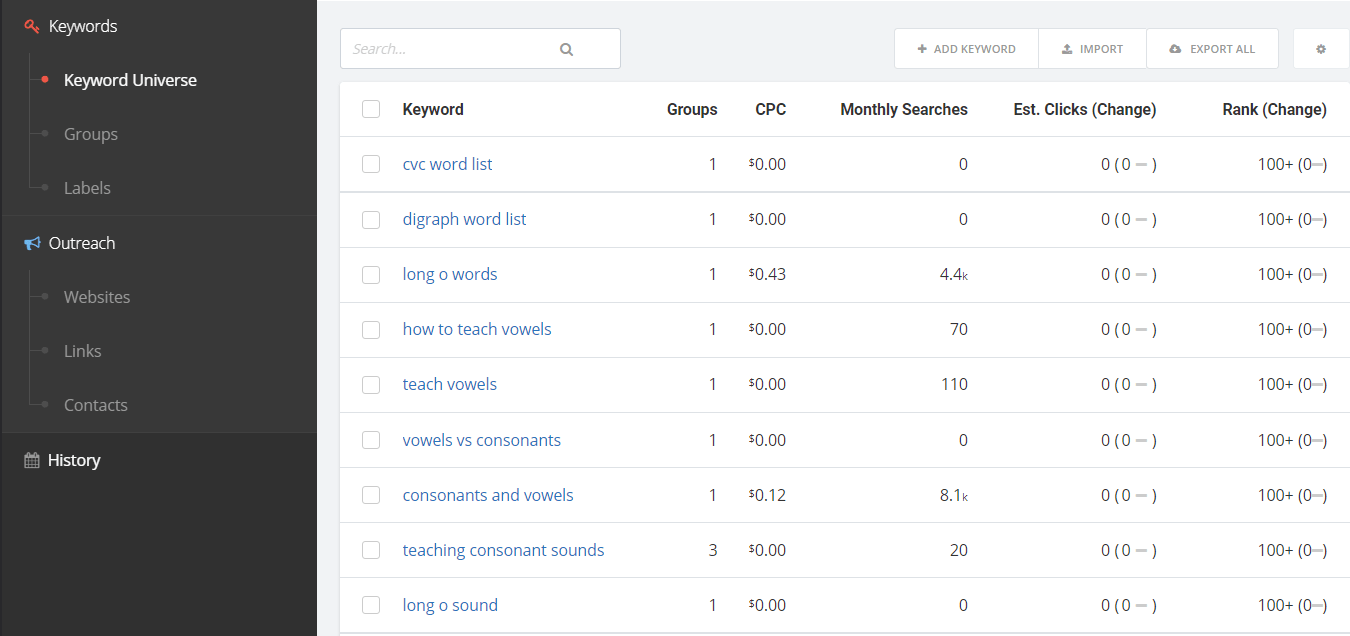
If you notice a keyword has lost rankings, consider doing a content refresh. A content refresh helps you re-energize and re-optimize your post, giving you a chance to get back into the top 10.For the best results, focus on pages with a lot of keywords in the 11-15 slots. The majority of traffic goes to the first page; if you move from rank 11 to 8, that’s worth far more than moving from 30 to 20. Find pages with lots of keywords nearly in the top 10 so your refreshes offer you the biggest bang for your buck.
3. Making Site Structure an Afterthought
Picking the right keywords and making great content is just one part of a larger SEO strategy. If you want to rank well, you’ll also need to plan your content so it forms a structure that logically groups your content into topic clusters. Good site structure makes your site easier to navigate for users, and it amplifies the SEO value of each individual piece as they’re more discoverable and understandable by Google.
Planning a site structure is a lot harder than most people think. As sites grow, it’s challenging to make all your content easily findable regardless of which page your reader is on. As a result, some websites decide to forgo any planning, to their detriment.
For example, the popular knitting website Yarn Harlot has been around for nearly 15 years, and it has accumulated a large number of blog posts, but you’d be hard-pressed to ever find a specific one. It has no categories, menus, or topic clusters, only a single continuous feed of everything they’ve ever posted.
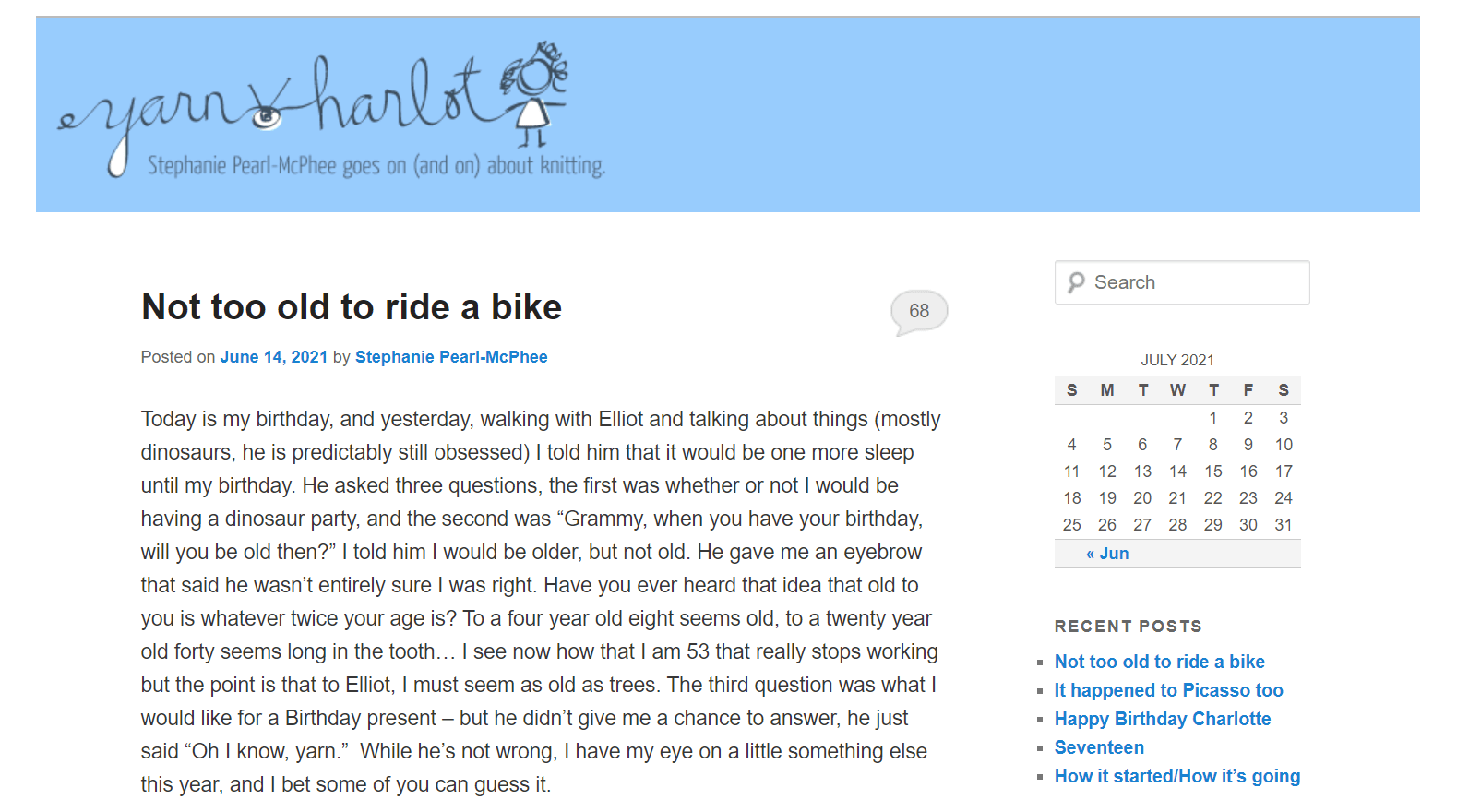
This leaves the website completely disorganized. If you were on their site and wanted to find other posts on a similar topic, it would be difficult to do without searching on Google or scrolling until you find something else.
It also has very few internal links. Internal links are hyperlinks that navigate users from one part of your site to another. They help users find other content they might want to read next. As well, they help search engines understand what specific pages are about. For example, if you continually link to a page with the anchor text “best dog bowls,” then search engines will get the signal that the page you’re linking to is about dog bowls.
Without internal links and a broader site structure, users and search engines alike can’t find what they want on your site, making it harder to rank for keywords and boost organic traffic.
What to do Instead
Plan your site structure so it’s logically grouped, connected with a network of internal links, and accessible with the fewest possible clicks.
Most websites focus on a single niche, but you can write about various subtopics within that niche. For instance, if you own a cat website, then you may want sections on cat food, cat toys, cat breeds, and so on. Each of these sections could become its own topic cluster, a collection of web pages related to each other by a broad theme.
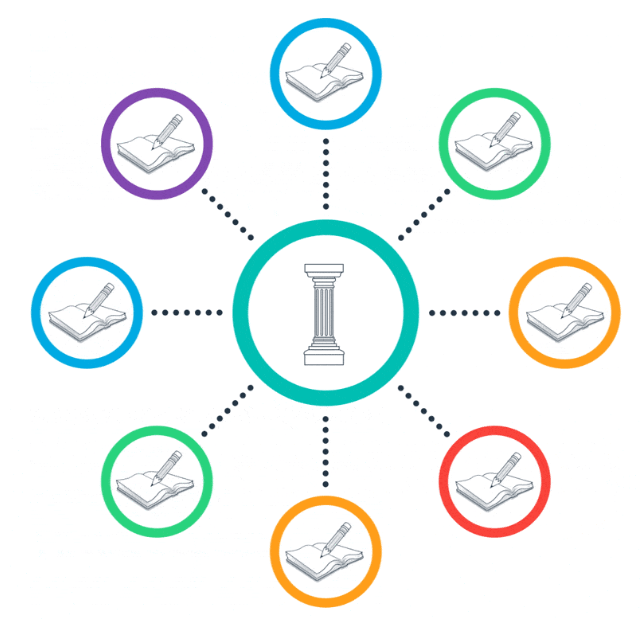
One common shape these clusters take is a hub-and-spoke model. In the middle is a big general overview piece that touches on everything you’d want to know about cat toys. It would link out to smaller niche articles on subtopics related to cat toys, like electronic cat toys, vegan cat toys, or best cat toys for kittens. With all of these pages connected, it allows for:
- Users to easily find more content related to what they’re reading now.
- Search engines to index more of your content when they’re crawling.
- Better SEO for all of the pieces in the cluster, as authority from higher-performing pieces is shared by lower-performing ones.
Each cluster also needs to fit nicely within the larger site architecture, which should be as flat as possible. A flat site structure means that users should never have to click more than three or four times to reach the information they want. If they have to click five, six, or more times, this is too deep, and it encourages people to go back to Google to find what they’re looking for (even if it’s on someone else's site).
An example of doing this right is the Anchor blog, a blog aimed at helping podcasters. There are five simple categories at the top of their page that describe their main topic clusters: create, share, grow, inspiration, and updates.
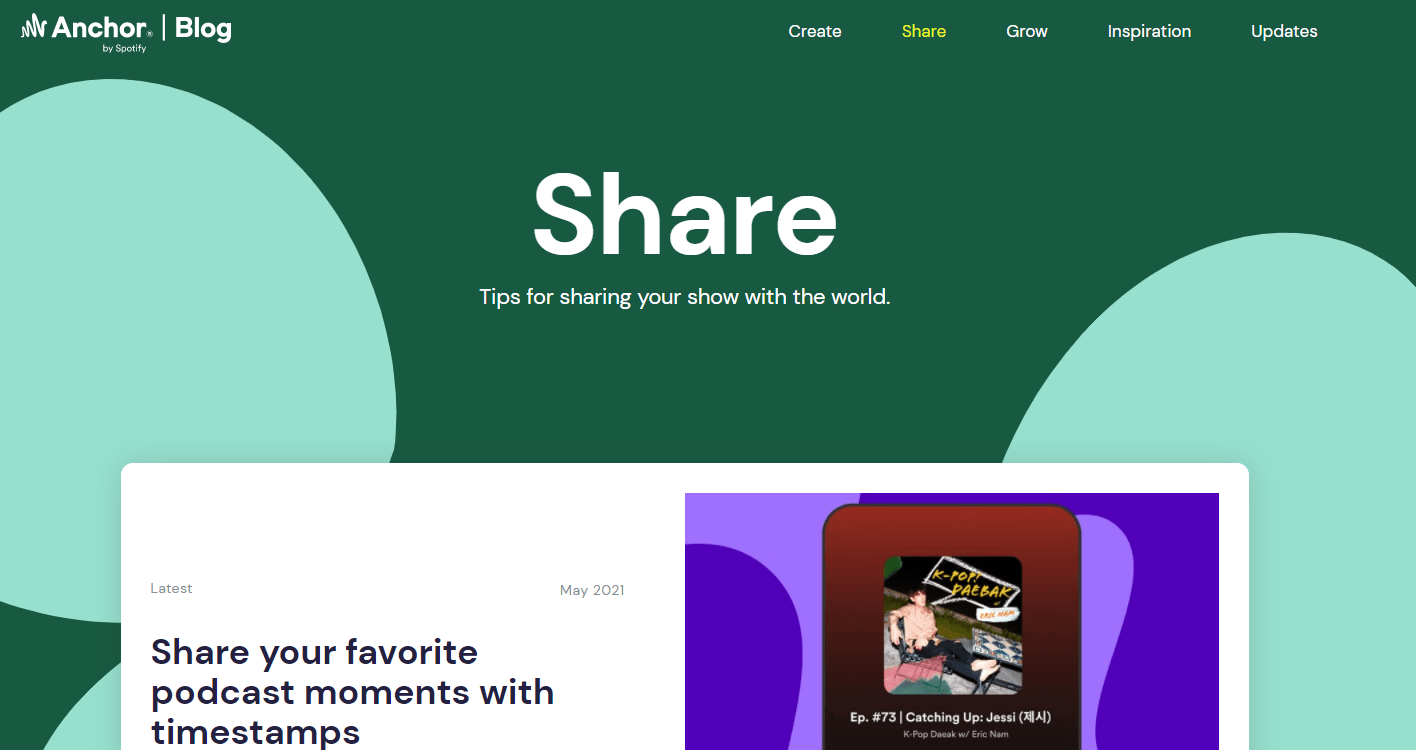
Since their content is all aimed at a single niche, this basic, flat style works perfectly for keeping their blog content organized and easy to navigate. Larger sites might need more sections or subsections to help keep it all manageable.
4. Lazy Image and Video Creation Efforts
Images and videos are proven ways to improve engagement with posts, helping them rank for keywords. They can also rank in Google Image or Video searches on their own, further increasing organic traffic. However, if you want to see returns on your images and videos, you need to put in the effort to make visuals that stand out and add to your content.
For many websites, visuals are a nice window dressing that breaks up the text on the page. These websites usually take advantage of free stock images anyone can upload. The problem with stock photos is they’re generic and usually don't add any value to your content because they weren’t designed for your content.
Another issue with visuals is formatting. When photos are poorly sized and optimized for different screen sizes, they often slow down the page and hurt engagement as no one likes having to scroll past a giant, pointless image.
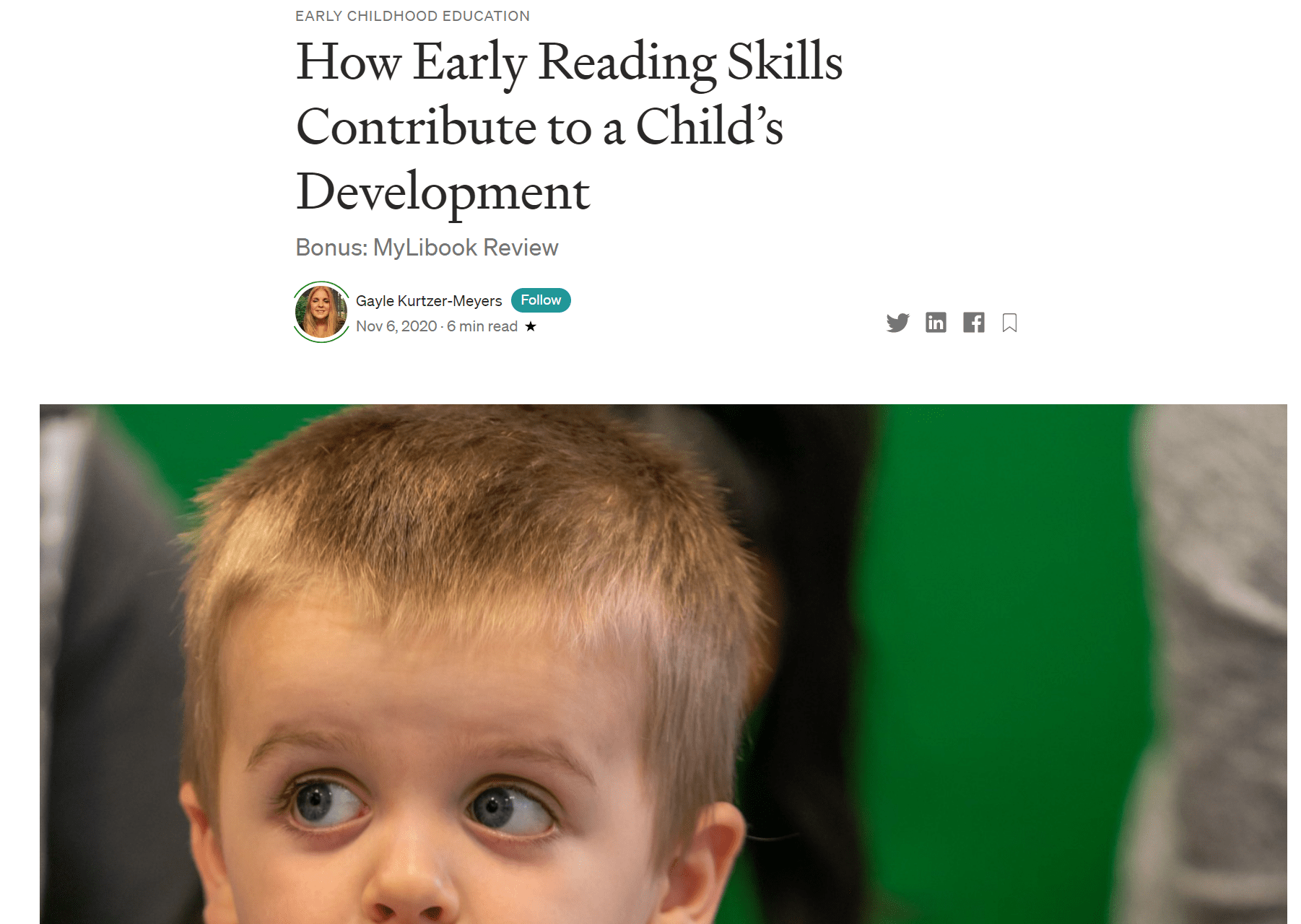
We’ve only included a quarter of this cover image found on a post about early reading skills. It’s too large, and it doesn't add anything of value to the piece. This doesn't mean you shouldn't use visuals in your work; it only means you'll have to step up your visual game if you want to use visuals to help you rank for keywords.
What to do Instead
Good visuals do more than rehash what’s already on the page. Although they should relate to what you read, they should also add value on their own by bringing something new to the table or making the point more clearly. For example, this image from Bonsai’s homepage helps explain Bonsai’s main value prop: making it easy to organize and automate your online business in one place.
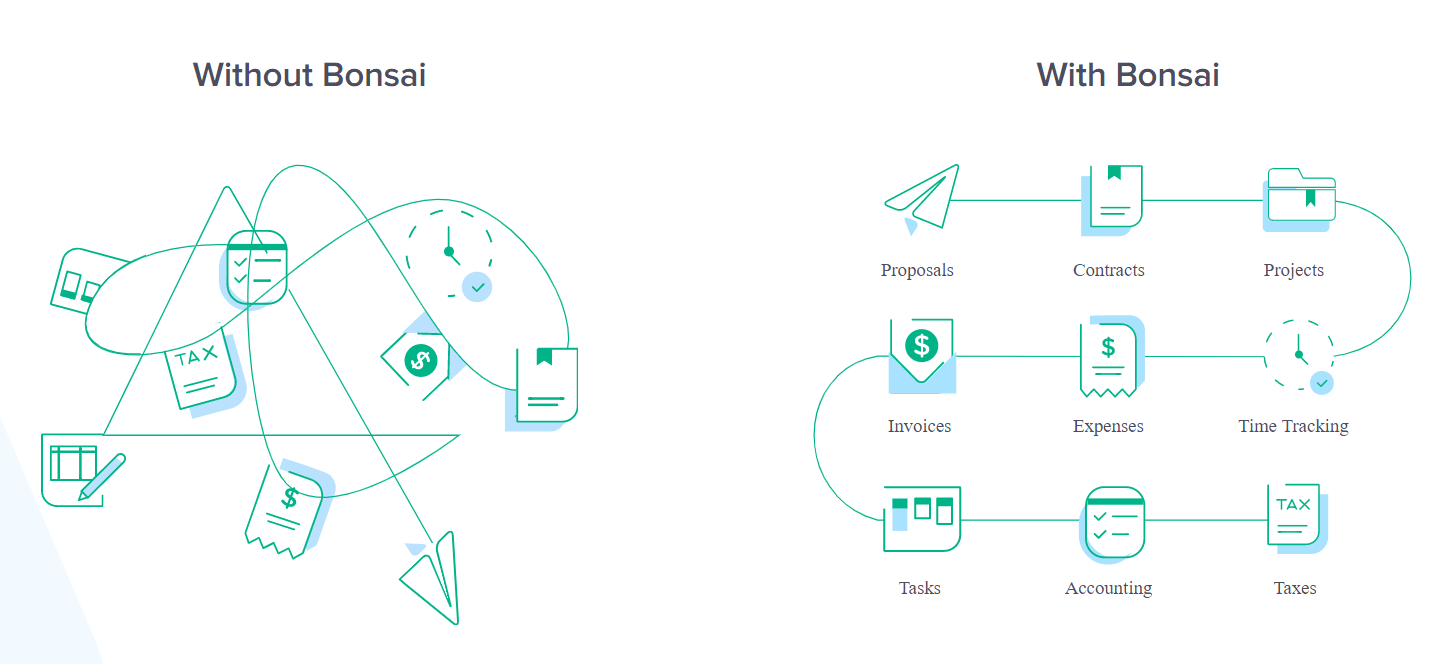
This image clearly shows people what Bonsai offers and lays out why you might consider using their services. Rather than using a stock image that adds little, this image helps readers engage with the content by making the value prop clearer visually.
When you do visuals right, they won’t just add value to the page; they also help you improve your keyword rankings. For instance, this post on visual design basics has a custom image explaining design basics at the top of the page.
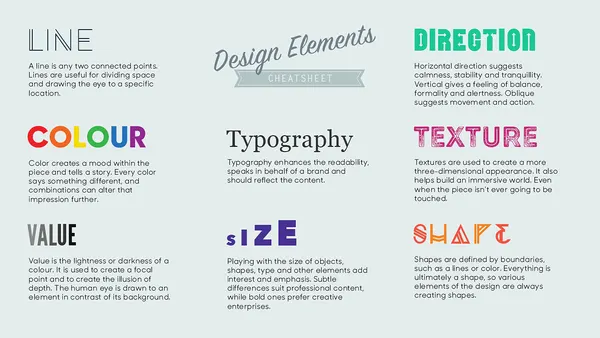
When you check the SERP for “visual design basics,” you see this post in the top 10, plus if you skip over to images, this image is there, too.
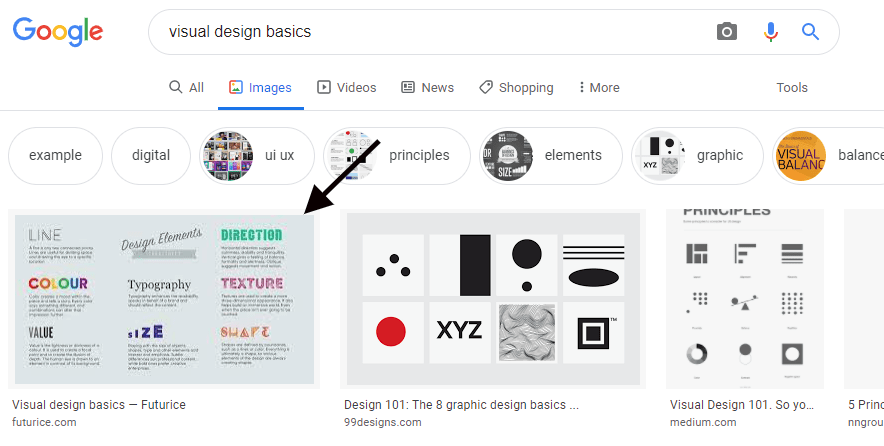
With this image ranking, it drives more organic traffic to this post, and it might even help the post itself rank better.
The same can be said for videos. Videos that add value and are well-optimized have a chance to rank themselves and improve the rankings of the page they’re embedded on. For example, if someone searched “how to fix a zipper,” they would see this video at the top of the SERP.
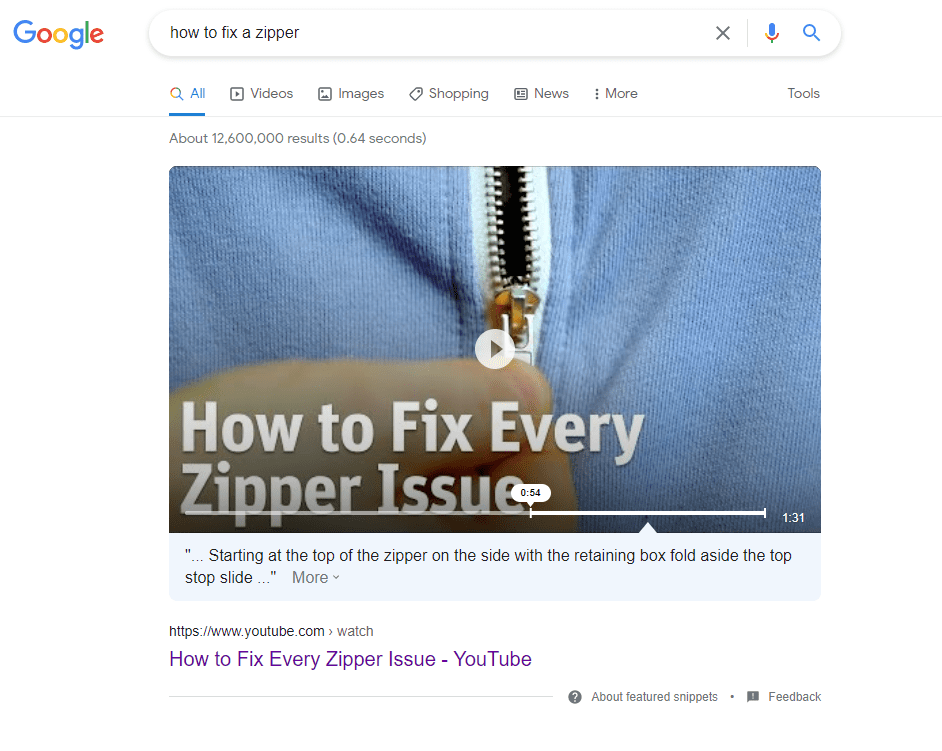
Because it’s above the first organic result, people are far more likely to click on it. However, the page this video is from is also in the top 10.
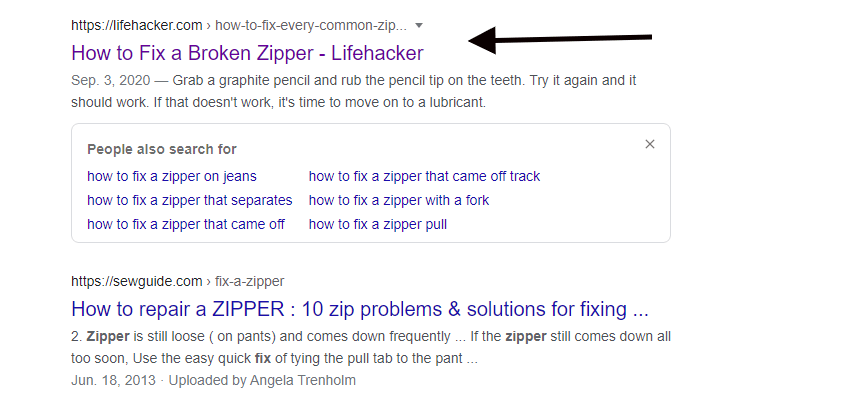
This means this content has two spots on the front page of Google, making it far more likely to get organic clicks than its competitors.
Great visuals can be the x-factor that’ll earn you the top spots on the SERP and drive valuable organic traffic to your website. To learn more about how to make optimized visuals, check out our guides to image SEO and video SEO.
Ranking For Keywords Is Only Important if You’re Getting Relevant Clicks
Better keyword rankings on Google shouldn't be your main SEO goal. You want to get clicks from relevant searchers. The best way to make sure you’re building rankings toward relevant clicks is to have a fool-proof content strategy in place before you start writing.
You can learn more about finding a way to win clicks through your content by reading our guide to building a content strategy. Or, if you want to see a content plan in action, take a look at how Intercom used content marketing to build its web presence.

